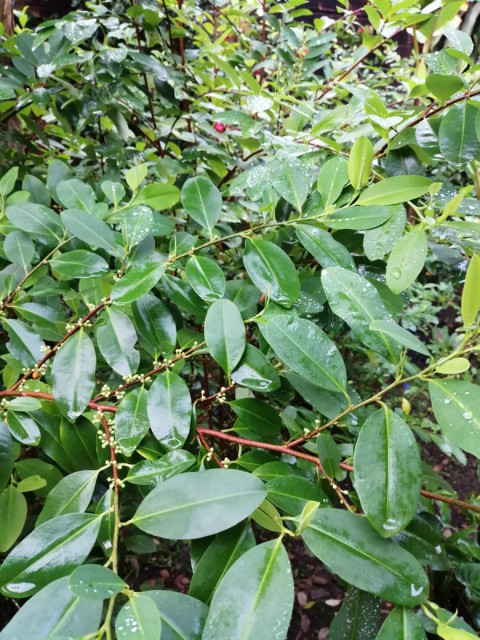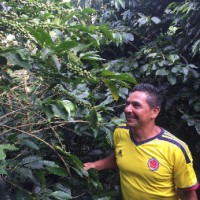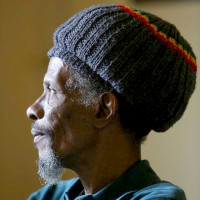The ‘deja vú’ of aerial crop spraying in Colombia
Publication date:
At the end of 2019 the government of Iván Duque presented a draft decree to resume the spraying of drug crops used for illicit purposes. It argued that spraying is the only instrument to curb the increase in coca crops.

Corporación Viso Mutop

Corporación Viso Mutop
On February 10 and 11, 2020, a Dialogue on Aerial Spraying and Human Rights took place in Bogotá. At the event, several non-governmental organizations and representatives of different communities nationwide gathered to discuss the national government’s decision to counter the illicit drug trade by resuming aerial sprays with glyphosate.
For two days, members of farmers’ and Afro-descendants’ communities from Nariño, Putumayo, Guaviare, Amazonia, Cauca and Sur de Bolívar related their previous experiences of the negative effects of fumigation on both their food crops and on their health. The destruction of entire crops, contamination of water sources, miscarriages, malformations in newborns were, among others, some of the effects of glyphosate use that led the National Narcotics Council (CNE) to suspend aerial spraying in 2015. The council considered it a practice with potential damage to human health and the environment. Soon after, in 2017, the Constitutional Court established, through Case T-236, six conditions under which fumigation could be resumed. This was after analyzing human rights violations to the population of Nóvita, Chocó, as a result of sprays carried out in 2012.
However, at the end of 2019 the government of Iván Duque presented a draft decree to resume the spraying of drug crops used for illicit purposes. It argued that spraying is the only instrument to curb the increase in coca crops. The decree was subject to citizens’ review until January 30, then after adjustment by the executive it will be up to the CNE to determine whether the spraying is resumed or not. Although General Procurator Fernando Carrillo warned of the need to comply with the adjustments required by the Constitutional Court, and questioned the institutional design of the decree, the return of chemical spraying seems imminent. In fact, the National Police has nine Air Tractor AT-802 aircraft ready for use in the second half of this year, and the United States, Colombia’s main ally in the war on drugs, celebrated the launch of the decree.
To address the impending return of fumigation, the Viso Mutop Colombian Observatory of Illicit Crops, with the support of the Transnational Institute, and Broederlijk Delen, a Belgian NGO, called upon different drug policy experts and representatives of affected communities to think about future legal strategies that could halt the use of this herbicide. They also called on them to define routes of action to address the potential human rights violations as a result of the fumigation program. Some of the agencies of the United Nations system in Colombia were also present to hear the concerns of the communities regarding possible human rights violations caused by the restarting of aerial spraying.
The gathering highlighted the urgent need to reposition fumigation and its impact on communities. There is some weariness around the long time taken to resolve formal complaints, and the long wait makes the communities forget about the dangers and damages of glyphosate. To tackle that, it is necessary to insist that fumigation, as forced manual eradication, is a serious human rights violation. The idea is to commemorate victims of aerial spraying, in order to bring back to attention the harmful effects that led to its prohibition.
During the Dialogue, Alirio Uribe, from the José Alvear Bar Association, highlighted the ineffectiveness of fumigation as the main tool in crop reduction, as well as the disproportionate costs incurred: “Before the spraying during Plan Colombia coca was grown in 12 regions, but after spraying it expanded to 22. While spraying will cost the State around 243 million pesos per hectare, buying the harvest from the farmers would only add up to 12 million pesos. It is better to buy the harvested leaf from the farmers and offer them alternative programs, than to fumigate.” said Uribe. He also pointed out that due to the spraying several communities have been displaced.
So the dissemination and revival within the communities of the memories of fumigation would be a priority, to also make sure communities have knowledge of legal implications when a complaint is filled, and how to proceed in the case their rights are violated. It is necessary to understand the legal component, the obstacles that this entails and the time it takes. Therefore, it was proposed to call on the communities not to fall into the trap of the technical-scientific discussion around the fumigation, since the burden of scientific evidence cannot fall on the peasants. On the contrary, the participants contemplated the possibility of using available technologies to video record the evidence of human rights violations once the spraying resumes.
Likewise, it was deemed important to create a pedagogical communication strategy towards the communities, so that they are informed of the subject. This communication should also reach out at an institutional level. This action must be accompanied by advocacy at the local level, in which all community forces act in a coordinated manner and attempt to unify criteria around a single purpose. An idea to propose a regional dialogue, so that communities can make their claim and ultimately convene a large national gathering of cultivation areas, was tabled. Those issues affecting all communities can be put on the table at such a gathering.
Although the resumption of spraying represents a setback in the way the state responds to the illicit drug trade, the participants agreed that it is necessary to understand this decree in a new context, created by the signed Peace Agreement. Marco Romero, director of Codhes, stressed that the best way to deal with the problem of illicit crops is for the Colombian State to comply with the peace agreement, especially in its first point, on Integral Rural Reform, and in its fourth point, which proposes a solution to the problem of illicit drugs. For this, Romero says, it is necessary to maintain an international line of work, especially from the United States, so that the implementation of the agreement can be supported from there.
One of the peace accord breaches has to do with the implementation of the National Plan for the Substitution of Crops for Illicit Use (PNIS), a program created between the national government and the FARC to promote the voluntary substitution of coca crops through the construction of productive projects to replace the illicit market. Despite the fact that more than 100,000 families registered with the PNIS and by December 2018 they had eradicated more than 30,000 hectares, the arrival of Iván Duque has meant a dismantling of the program, delays in bi-monthly payments to families, and the intensification of aggressive forced eradication operations by the public force.
In addition, the lack of support from the state has left the families registered to the PNIS in a vulnerable situation; subject to intimidation by illegal armed groups, forced to return to coca cultivation and, in other cases, the murder of the leaders involved in the voluntary eradication. This situation has already generated numerous protests in several areas of the country for breach of agreements (see Briceño case).
Undoubtedly, the return of fumigation in the Colombian countryside poses a threat to communities and to life in general, particularly when the harmful effects of the use of this herbicide are already proven. As put by Alirio Uribe: “I resist the idea that in the middle of 2020 we will resume the spraying. It feels like a deja vú.”


